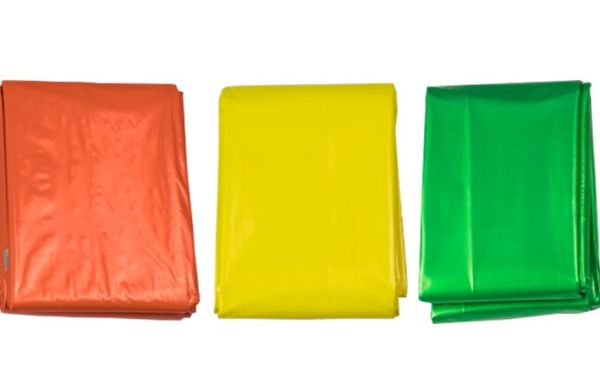Emergency blankets, also known as space blankets or Mylar blankets, are lightweight and compact sheets designed to provide thermal insulation and protection in emergency situations. They are commonly used in outdoor activities, search and rescue operations, and for general emergency preparedness. In this blog post, we will explore the history, construction, insulation properties, and various applications of emergency blankets, along with maintenance and care tips.
History and Evolution of Emergency Blankets
The concept of emergency blankets dates back to the 1960s when NASA developed aluminized Mylar sheets to protect astronauts from extreme temperature fluctuations in space. These early blankets, made from a thin and durable polyester film coated with a metallic layer, were later adapted for use on Earth. Over the years, emergency blankets have evolved with advancements in materials and technology, making them more effective and versatile in providing thermal insulation.
What Are Emergency Blankets Made Of?
Emergency blankets are typically made of a thin and lightweight polyester film, such as Mylar, which is coated with a thin layer of metal, usually aluminum. This metal coating gives the blanket its reflective properties and enhances its insulation capabilities. The blanket is often silver or gold in color, although other variations can be found.
Features of Emergency Blankets
Reflective Properties:
Emergency blankets are made of aluminum material, known for its reflective nature. This unique feature allows you to harness body heat by using the blanket to reflect warmth back to you. Conversely, you can also utilize it to stay cool by reflecting heat away, making it versatile in various situations. From creating makeshift tents for cooler shelter to starting fires and signaling for help, the reflective quality proves indispensable in survival scenarios.
Water Resistance:
Waterproof emergency blankets offer a myriad of advantages. They effectively repel rainwater, enabling you to construct survival shelters with enhanced protection from the elements. Moreover, they play a vital role in preventing heat loss through evaporation, making them essential cold weather survival tools. By lining your tent with a Mylar outdoor blanket, you can effectively trap heat, ensuring a more comfortable and secure environment.
Wind Resistance:
One of the key benefits of Mylar blankets is their ability to block wind. When used to line the interior of your tent, they act as a formidable barrier against chilly gusts, enhancing warmth and comfort. Additionally, wrapping the blanket around yourself helps to prevent heat loss and shields you from the bitter sting of a chilling breeze, making it ideal for windy conditions.
Durability:
Mylar blankets are renowned for their remarkable durability. However, it's vital to choose an emergency blanket set crafted from high-quality materials to ensure optimal protection before use. Investing in a reliable and sturdy emergency blanket ensures that it remains a dependable survival tool in challenging situations.

Benefits and Limitations of Emergency Blankets
Emergency blankets, also known as Mylar blankets or space blankets, offer a range of advantages that make them valuable tools in emergency situations. Understanding both their benefits and limitations is crucial for using them effectively.
Benefits:
Compact Size: One of the standout benefits of emergency blankets is their compact and lightweight design. They can be folded or rolled into a small package, making them easy to carry in backpacks, emergency kits, or even pockets. Their portability ensures that you can always have one on hand when needed.
Lightweight Nature: Emergency blankets are incredibly lightweight, which is particularly advantageous for hikers, campers, and anyone needing to carry essential survival gear without adding significant weight to their load. This makes them a preferred choice for outdoor enthusiasts and emergency preparedness.
Affordability: Another appealing aspect of emergency blankets is their cost-effectiveness. They are relatively inexpensive, allowing people on a tight budget to acquire an essential survival tool without breaking the bank.
Ease of Use: Emergency blankets are user-friendly, requiring no special skills or training to utilize effectively. In emergencies, where time is of the essence, their simplicity is a crucial factor.
Versatility: These blankets are remarkably versatile and can be used in various ways. Apart from their primary function of reflecting heat and preserving body temperature, they can serve as improvised shelters, ground covers, or even signaling devices.
Limitations:
Short-Term Solution: While emergency blankets excel at providing immediate protection and warmth, they are not designed for extended or long-term use. Their thin and lightweight construction may not withstand the rigors of continuous use and harsh conditions.
Extreme Cold Conditions: While emergency blankets are effective at retaining body heat in moderate cold, they may not be sufficient in extremely frigid environments. In severe cold weather, additional insulation, proper clothing, and shelter are necessary for comprehensive protection.
Fragility: Despite their durability in emergency situations, emergency blankets can tear easily, especially if not handled with care. Sharp objects or rough surfaces can cause damage, rendering them less effective over time.
Limited Coverage: Standard emergency blankets typically provide coverage for an individual, which may not be sufficient if trying to shelter multiple people. In group survival scenarios, several blankets may be needed to ensure everyone's well-being.
Applications of Emergency Blankets
Sleeping Mat: Mylar blankets can be used as a waterproof sleeping mat to protect the body from dampness when outdoors during an emergency. They help retain heat and provide insulation from the ground.
Campfire Backdrop: These blankets can act as a backdrop for a campfire, reflecting more heat towards you. As long as they are kept at a safe distance from flames, they won't melt. Additionally, they can be used as a clothesline to dry damp clothing quickly when placed in the sun.
Fire Starter: The reflective nature of Mylar blankets can be harnessed to start a fire. By directing sunlight onto tinder using the reflective surface, they can aid in fire ignition. The blankets can also double as a windbreak during this process.
Makeshift Oven: Using rocks or dirt, an emergency thermal blanket can be used to build a makeshift oven. Placing it directly facing the sun allows for cooking small pieces of fish or meat on the Mylar surface.
Trail Markers and Signaling Mirror: Mylar's reflective properties make it useful for marking trails or signaling for help. Cut or tear the material into squares and secure them with rocks or duct tape to mark paths or attract attention.
Fishing Lure: Wrapping Mylar around a pebble or stick creates a shiny fishing lure that can attract fish. The reflective nature of the material makes it enticing for fish.
Emergency Cordage: Mylar can be tied or braided together to create emergency cordage. While it is strong enough for securing items like cloth, holding caught fish, or making snares, it may not be suitable for activities requiring high-strength rope.
Emergency Arm Slings and Tourniquets: In a wilderness or disaster situation where medical assistance is not readily available, thin strips of Mylar can be used as emergency arm slings or tourniquets to provide temporary support or control bleeding.
Heat Maximization: When the power goes out, placing a Mylar blanket behind wood stoves, lanterns, or candles can help maximize heat output by reflecting and redirecting heat towards the desired area.
Heat Insulation: By affixing emergency thermal blankets to windows and doors using duct tape, heat can be prevented from escaping, thereby improving insulation and keeping warmth inside. These blankets can also be lined inside sleeping bags to enhance insulation and prevent body temperature from dropping too low.

Maintenance and Care Tips for Emergency Blankets
Proper maintenance and care of emergency blankets are vital to ensure their effectiveness and longevity, making them reliable tools in times of need. Here are detailed guidelines to follow for maintaining your emergency blankets:
Cleaning the Blanket:
After each use, gently shake off any dirt, debris, or moisture from the blanket. You can also wipe it down with a soft, damp cloth if necessary.
If the blanket is heavily soiled, avoid using harsh detergents or chemicals, as they may damage the reflective coating. Instead, opt for mild soap and lukewarm water to clean the surface gently.
Rinse the blanket thoroughly to remove any soap residue and pat it dry with a clean towel.
Folding and Storage:
Proper folding is essential to prevent creases and damage to the reflective material. Follow the original creases, or fold the blanket into a compact and flat form.
Store the folded emergency blanket in a dry, cool, and dark place. Avoid exposure to direct sunlight, high temperatures, or extreme humidity, as these conditions may degrade the reflective properties over time.
Inspection and Repair:
Regularly inspect the emergency blanket for any signs of wear and tear, such as tears, punctures, or frayed edges. Check both sides of the blanket thoroughly.
If you discover any damage, it is essential to address it promptly. Small punctures or tears can be patched with specialized emergency blanket repair tape. Follow the manufacturer's instructions for the repair tape application.
For significant damage or if the reflective coating is compromised, consider replacing the blanket with a new one to maintain its full functionality.
Testing the Reflective Properties:
Periodically check the reflective properties of the emergency blanket to ensure it is still effective in retaining heat and reflecting light.
You can conduct a simple test by wrapping yourself in the blanket and using a flashlight or headlamp to check if light is reflected back towards you. This will verify the integrity of the reflective coating.
Avoiding Sharp Objects:
Be cautious when handling emergency blankets around sharp objects or rough surfaces, as they can easily puncture or tear the thin material. Avoid contact with sharp tools, rocks, or abrasive surfaces.
Proper Use and Storage:
Only use emergency blankets for their intended purpose, which is to provide temporary protection, insulation, and heat retention in emergencies.
Avoid using the blanket for extended periods or in extreme cold conditions where additional insulation is necessary.
If the blanket becomes damp or wet, allow it to dry completely before folding and storing it to prevent mold or mildew growth.
Stay Prepared with Wellmien Emergency Blankets
Emergency blankets, with their innovative design and reflective properties, are remarkable tools that play a crucial role in survival situations. By harnessing the power of their aluminum material, these blankets can effectively retain body heat or reflect it away, making them versatile in various weather conditions.
At Wellmien, we understand the importance of preparedness and safety, which is why we offer top-quality emergency blankets designed to meet the needs of outdoor enthusiasts, adventurers, and emergency responders alike. Our compact, lightweight, and durable blankets are perfect companions for your outdoor adventures and a must-have addition to any emergency kit.
Stay protected, stay warm – trust Wellmien for reliable and effective emergency blankets that make a difference when it matters most.







